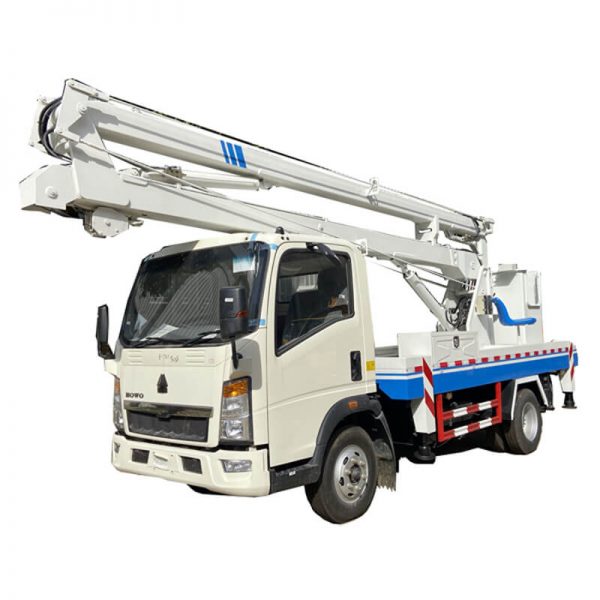Exploring Work Truck Salt Spreader Options for Efficient Winter Maintenance
Introduction: As winter approaches, municipalities and businesses that are responsible for maintaining roads and parking lots face the challenge of keeping these surfaces safe and clear of snow and ice. Work trucks equipped with salt spreaders are essential tools in this endeavor, allowing for efficient and effective distribution of salt or other de-icing materials. In this comprehensive guide, we will explore the various options available for work truck salt spreaders, ranging from basic tailgate spreaders to advanced hopper spreader systems, and everything in between. Types of Work Truck Salt Spreaders: 1. Tailgate Spreaders: Tailgate spreaders are one of the most common and cost-effective options for work trucks. These spreaders attach to the tailgate of the truck and are powered by the vehicle's electrical system or a separate engine. Tailgate spreaders are typically used for light to moderate-duty applications and are best suited for smaller trucks and parking lot maintenance. They are easy to install and operate, making them a popular choice for businesses and contractors with smaller budgets. 2. Hopper Spreaders: Hopper spreaders are larger and more versatile than tailgate spreaders, making them suitable for a wide range of applications, from municipal road maintenance to large parking lots. These spreaders consist of a hopper that holds a larger volume of salt or de-icing material, which is then distributed through a spinner mechanism onto the road surface. Hopper spreaders can be mounted on the back of a truck or a trailer, providing flexibility and efficiency in spreading operations. 3. V-Box Spreaders: V-box spreaders, also known as auger spreaders, are designed for heavy-duty applications and are commonly used by municipalities and highway departments. These spreaders feature a V-shaped hopper that allows for efficient distribution of salt or sand on the road surface. V-box spreaders are known for their high capacity and superior spreading performance, making them ideal for large-scale snow and ice control operations. They can be mounted on a truck chassis or a trailer, providing versatility and durability in harsh winter conditions. 4. Liquid De-Icing Systems: In addition to traditional salt spreaders, work trucks can also be equipped with liquid de-icing systems for more effective and environmentally friendly snow and ice control. Liquid de-icing solutions, such as brine or calcium chloride, can be sprayed directly onto the road surface, providing faster melting and longer-lasting protection against freezing temperatures. These systems are becoming increasingly popular due to their efficiency and reduced environmental impact compared to traditional salt spreaders. Factors to Consider When Choosing a Work Truck Salt Spreader: 1. Capacity: The capacity of the salt spreader is an important factor to consider, as it determines how much material can be spread in a single operation. Smaller trucks and parking lots may require a lower capacity spreader, while larger trucks and highways will benefit from a higher capacity spreader to minimize downtime for refilling. 2. Spreading Mechanism: Different salt spreaders use various spreading mechanisms, such as spinners, augers, or liquid sprayers. The choice of spreading mechanism will depend on the application and desired spreading pattern. Spinners are suitable for wide coverage areas, while augers provide more precise control over the spread material. 3. Mounting Options: Work truck salt spreaders can be mounted in different ways, such as on the tailgate, back of the truck, or on a trailer. The mounting option will depend on the size of the truck, the type of spreading operation, and the desired flexibility in spreading operations. Consider https://www.heli-truck.com/garbage-compactor-truck/ mounting options available and choose one that best suits your specific needs. 4. Control Systems:  Modern salt spreaders come equipped with advanced control systems that allow for precise adjustment of spreading rates, material flow, and spreading patterns. Consider the type of control system offered with the salt spreader and choose one that provides ease of operation and customization options for optimal performance. 5. Durability and Maintenance: Salt spreaders are exposed to harsh winter conditions and require regular maintenance to ensure reliable operation. Consider the durability of the spreader construction, the quality of components, and the availability of replacement parts when choosing a work truck salt spreader. Opt for a well-built and easy-to-maintain spreader to minimize downtime and repair costs. Conclusion: Work truck salt spreaders are essential tools for efficient winter maintenance, providing a reliable and effective solution for snow and ice control on roads and parking lots. By understanding the different types of salt spreaders available, considering key factors such as capacity, spreading mechanism, mounting options, control systems, and durability, businesses and municipalities can choose the right salt spreader for their specific needs. Whether it's a tailgate spreader for light-duty applications or a V-box spreader for heavy-duty operations, investing in a quality salt spreader will help ensure safe and clear road surfaces during the winter months.
Modern salt spreaders come equipped with advanced control systems that allow for precise adjustment of spreading rates, material flow, and spreading patterns. Consider the type of control system offered with the salt spreader and choose one that provides ease of operation and customization options for optimal performance. 5. Durability and Maintenance: Salt spreaders are exposed to harsh winter conditions and require regular maintenance to ensure reliable operation. Consider the durability of the spreader construction, the quality of components, and the availability of replacement parts when choosing a work truck salt spreader. Opt for a well-built and easy-to-maintain spreader to minimize downtime and repair costs. Conclusion: Work truck salt spreaders are essential tools for efficient winter maintenance, providing a reliable and effective solution for snow and ice control on roads and parking lots. By understanding the different types of salt spreaders available, considering key factors such as capacity, spreading mechanism, mounting options, control systems, and durability, businesses and municipalities can choose the right salt spreader for their specific needs. Whether it's a tailgate spreader for light-duty applications or a V-box spreader for heavy-duty operations, investing in a quality salt spreader will help ensure safe and clear road surfaces during the winter months.